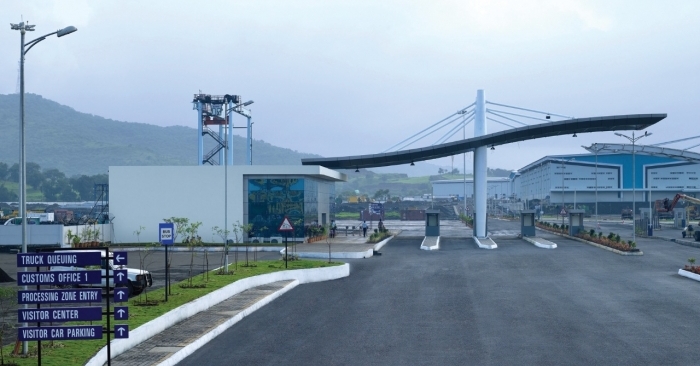FTWZs back into action as India lifts lockdown
During the initial period of lockdown SEZs were permitted to operate with all the standard operating procedures in place for exports and imports. While the activity was limited amid crisis it subsequently picked up and now both the inbound and outbound traffic is back to similar levels as before.

During the initial period of lockdown SEZs were permitted to operate with all the standard operating procedures in place for exports and imports. While the activity was limited amid crisis it subsequently picked up and now both the inbound and outbound traffic is back to similar levels as before.
As of September 2020, 255 special economic zones (SEZs) are operational and there are over 358 notified SEZs. Most private operational SEZs are in IT/ITeS. There are 5,476 approved units in SEZs as of June, states a data released by the Special Economic Zones in India, ministry of commerce & industry, department of commerce. The report continues to state that as of June 2020, the exports in FY2020-21 stood at ₹ 1,51,760 crores, a decrease of -18.30 percent over the exports of the corresponding period of FY2019- 20, which was at ₹ 7,96,669 crores. The current pandemic has affected the global demand resulting in idle capacity in the SEZ units.
However, during the initial period of lockdown SEZs were permitted to operate with all the standard operating procedures (SOPs) in place for exports and imports. While the activity was limited amid crisis it subsequently picked up and now both the inbound /outbound traffic is back to similar levels as before. Commenting on the impact on the business as all modes of transportation were gradual, Ananya Mittal, chief strategy officer, Arshiya, states, “The pandemic has hit every industry directly or indirectly. We positively observed the crisis and started working towards providing services to our client and cargoes stuck at JNPT and around Delhi. We had more business and revenue during the pandemic. We have also adopted a lot of new digital methods during these times which helped us to work more proactively for our clients.”
Lack of labour, driver unavailability, congestion at ports, container freight stations (CFS) and inland container depots (ICDs) – such issues became a major concern for the commerce and labour ministry to handle ahead. Supporting the initiatives set by the government of India to tackle Covid-19 related logistical concerns, Arshiya kept its FTWZs in Panvel, Maharashtra and Khurja, NCR operational for de-stuffing cargo without payment of duty. The company’s capacity has gone up by 40 percent during the crisis and is further developing a new warehouse of 325,000 square feet in the existing FTWZ in Panvel, which will be ready by December.
Meanwhile, calling for policy amendments in February, Sunil Rallan, chairman and managing director, J Matadee stated that duty tariffs must be levied based on ‘Duty Foregone Principle’ as it would enable high manufacturing efficiencies. “The SEZ units are burdened with high fixed costs and interest obligations. Ability to provide manufacturing services and job work to the Indian DTA (domestic tariff area) will result in saving several jobs and creating more employment. We request that SEZ units be permitted to undertake manufacturing services/job work to DTA. The tariffs can be applied on the ‘Duty Foregone Principle’ and it is already in practice under the MOOWR (Manufacture and other Operations in Warehouse Regulations) 2019 Scheme,” he observes.
At present, the Phase 1 of J Matadee’s Chennai Free Trade Zone has around 1 million square feet built-up area and is fully occupied by 3PL companies like DHL, Kerry, DB Schenker, TVS Logistics, Toyota Tusho and others. New clients are constantly engaging with the company for more space to cater to the new manufacturing units which are setting up in the Chennai Bangalore Corridor particularly in the electronic sector.
At the same time, automation and digitisation have changed the face of FTWZs. Rallan observes, “Vendor managed inventory - this concept enables the overseas supplier to provide just-in-time (JIT) delivery to the Indian manufacturing and supply chains. The overseas supplier / manufacturing unit/ FTWZ unit has got complete visibility of the inventory. The DTA manufacturing unit can now pull the inventory instead of the push model. The overseas supplier can take steps to ensure that restocking takes places on a real-time basis and there are no stock-out costs to any customers.”
In October, Nitin Gadkari, union minister for road transport, highways, laid the foundation stone for India’s first multi-modal logistic park at Jogighopa, Assam. The ₹693.97 crore park, to be constructed in a 317- acre land along the Brahmaputra river will have a direct connection to air, road, rail and waterways which will be developed under Bharatmala Pariyojana. The phase I will be completed by 2023. The MMLP will have facilities like warehousing, railway siding, cold storage, customs clearance house, yard facility, workshops, petrol pumps, truck parking, and water treatment plant.
This article was originally published in Indian Transport & Logistics News' November - December 2020 issue.



